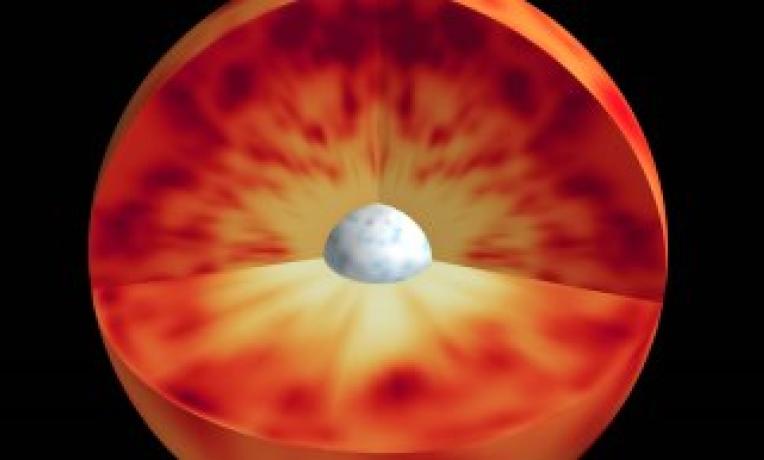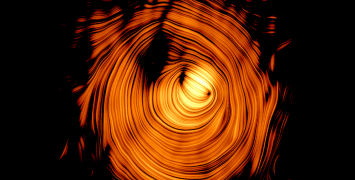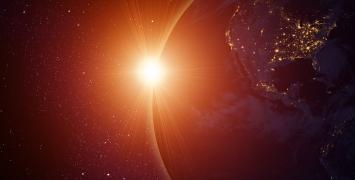Asteroseismology shakes up theory of stellar evolution
First published on 13-07-2016
Updated on 08-05-2018
What is the lifespan of a sun-like star? Well, it may not be quite what we thought. The outcomes of EU-funded asteroseismology research conducted by Professor Conny Aerts and her team show that the cores of red giants don’t spin nearly as fast as expected – and this, in turn, means that our understanding of the future of our sun was flawed.

“Asteroseismology is the study of starquakes. It is very similar to the study of earthquakes, in the sense that we use the same methods to get information on the interior of a star, rather than about the interior of our planet,” says Conny Aerts of the Belgian university KU Leuven. In the PROSPERITY project, which was backed by the European Research Council (ERC), she used this technique to check aspects of the theory of stellar evolution, and delivered new insights on the secret life of stars.
There is, of course, one major difference: asteroseismologists can’t take readings in situ. “We have to try to mimic what seismologists studying the Earth get from their seismographs,” Aerts explains. “What we actually measure is the impact of starquakes on the light we receive from the stars.”
PROSPERITY, a five-year project completed in 2013, seized an exciting opportunity to take the technique to new heights: the space-borne observatories CoRoT and Kepler, respectively launched in 2006 and 2009, were beaming back exquisitely precise measurements of minute changes in the light from distant stars. Ground-based observations can’t deliver the same level of detail, as they are distorted by the Earth’s atmosphere, says Aerts.
The two space missions, in contrast, enabled PROSPERITY to study variations of a mere millionth. Sophisticated mathematical methods were used to derive information on individual stars, and particularly on what goes on inside them. Soundwaves travel differently in objects depending on what they are made of, Aerts notes. “If you create a quake in an iron ball, it won’t behave in the same way as a quake in a silicon ball,” she adds.
A new look at ageing stars
Asteroseismologists are thus able to derive key parameters such as the size, mass and density of the star, and how long it will be able to sustain the nuclear fusion processes at its core. The speed at which the star’s core rotates is relevant in this respect. It affects the homogeneity of the material inside, and thus the efficiency of its nuclear fusion processes. “If more matter is mixed in the core, the star can live longer,” Aerts explains.
And this is one area where the accepted theory of how stars live fell flat. Analysis of the data revealed that the cores of ageing sun-like stars don’t spin nearly as fast as scientists had assumed. “What we had in the theory was totally wrong,” Aerts comments.
“We found that the core rotation was a factor 100 slower than the theory predicted,” she notes. This finding has implications for many areas of astrophysics, and consequently attracted particular attention.
Along with this unexpected insight, PROSPERITY delivered several other advances. It created new information about tidal forces on binary stars, for example, i.e. stars that orbit around the same central point as a second star. It also built a new instrument for ground-based observations.
As a further important contribution, the project enabled Aerts to involve and train a number of fledgling researchers, several of whom have now embarked on promising international careers. About a dozen young astronomers were thus given an opportunity to reach for the stars.
Watch this space
Aerts is excited that PROSPERITY has rocked assumptions. “The purpose was to test the theory. And luckily the outcome was that the theory was not good,” she comments. “Imagine if we had confirmed the theory – that would have been boring, right?”
Her groundbreaking work in the project won her a prestigious award in 2012: the Francqui prize, also known as the Belgian Nobel Prize. Aerts is the first and still only woman to have received this distinction in the Exact Sciences, and she doesn’t intend to rest on her laurels.
Aerts received additional ERC funding in 2014 in to work on her new project MAMSIE. “That’s the nickname that my kids have given me,” she reveals.
MAMSIE stands for Mixing and Angular Momentum Transport of Massive Stars and it focuses on modelling the seismic processes of massive stars, by using data that were collected in previous research. Data is available for 150,000 stars, but they are using artificial intelligence to identify some 150 of them - the ones that have quakes that are happening closest to the star core, as they are the ones that reveal the most about core rotation.
"In my grant, we are mainly focusing on massive stars, so they have much more kilograms than the Sun. But in practice, the better theory that we include in the model is also then applicable to stars like the Sun - the stars that have planets around them. The way that these planets live is tightly connected to the way their host star lives. So, our better stellar model predictions will also help the field of exoplanetology by providing better models of the host stars of the exoplanetary systems - and this is a critical aspect of astrophysics nowadays", Aerts explains.






